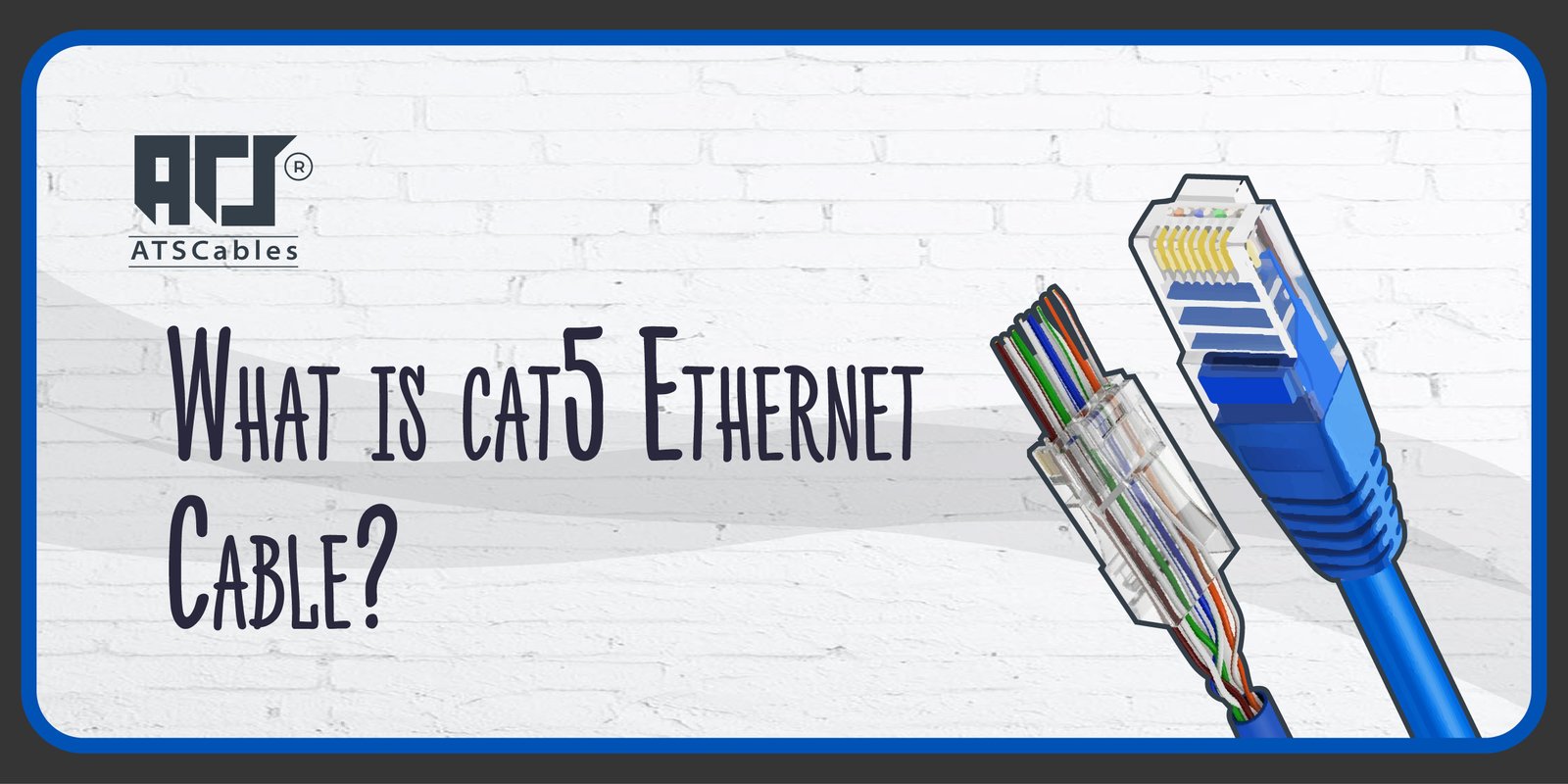
What is a Cat5 Ethernet Cable?
The Cat5 ethernet cable is something that you might have come across in your life once. It helps your computer to get internet connectivity so you can carry out different activities on it, such as browsing, gaming, etc. One of the best things about this cable is that it offers amazing speed.
The reliability and consistency in terms of speed that you can get from these networking cables are simply amazing. In this article, we’ll discuss the 100 ft. cat5 ethernet cable and how it can help you out. So, without further ado, let’s get right into it.
What Does the Cat5 Ethernet Cable 50 FT Entail?
If you don’t know what Cat5 cable is, then here is a quick overview. It is a network cable type through which you can connect the modem/router to a computer or laptop so it can get connected to the internet.
The Cat5 Ethernet cables are a perfect choice for your wired network needs. Designed for data transfer speeds of up to 100 Megabits per second (Mbps), also known as Fast Ethernet, Cat5 cables offer a reliable and cost-effective solution. Here’s what makes Cat5 a great option for mid-speed internet:
- Speed Compatibility
- Reliable Data Transfer
- Cost-effective Solution
Quick Explanation of the Cat5 Ethernet Cable Wiring Diagram
Ever wondered how those eight colorful wires inside a Cat5 cable work together? The magic lies in following specific wiring standards like T568A or T568B. These standards act like a secret code, defining the exact cat5 ethernet cable color code and position of each wire within the cable.
These wiring schemes are crucial for proper connectivity when using RJ-45 connectors, the rectangular plugs on each cable end. Each wire in the T568A or T568B configuration corresponds to a specific pin in the RJ-45 connector.
Following the correct standard ensures that the sending and receiving devices can communicate clearly, avoiding signal scrambling and ensuring a smooth data flow.
What is the Cat5 Ethernet Cable Speed?
Cat5 cables are designed to support data transfer speeds of up to 100 Megabits per second (Mbps). This translates to a noticeable improvement compared to wireless connections, especially in crowded environments where Wi-Fi signals can weaken. Cat5 offers a significant jump in performance over its predecessor, the Cat3 cable.
While Cat3 could only handle speeds of 10 Mbps, Cat5 provides a tenfold increase. As a result, it becomes a much more capable solution for modern internet needs. The beauty of Cat5 cables lies in their versatility. While they excel at connecting computers to networks, their applications extend further.
For instance, you can connect your Smart TV directly to the router using a Cat5 cable for a more stable and faster internet connection. Cat5 cables can also be used to connect various network devices like printers, game consoles, and network storage drives. As a result, it ensures reliable and efficient data transfer.
It’s important to remember that achieving the maximum 100 Mbps speed depends on several factors, including your internet service provider’s plan and the overall health of your network. However, Cat5 cables offer a substantial improvement over wireless connections, especially for basic internet browsing, emailing, and moderate streaming.
Can a 50-Foot Cat5 Ethernet Cable Handle Your Needs?
Cat5 Ethernet cables are a workhorse for home networks, offering a reliable wired connection. But when it comes to length, is 50 feet enough? Generally, Cat5 cables function optimally at lengths up to 100 meters (328 feet). This ensures minimal signal degradation and top performance. While exceeding 100 feet won’t necessarily cause complete failure, it can introduce some challenges, such as:
- Reduced performance
- Data transfer issues
- Increased interference
For most home network setups, a 50-foot Cat5 cable is perfectly adequate. It offers a good balance between length and reliable performance.
Color Code Cat5 Ethernet Cable
Cat5 Ethernet cables utilize a specific color-coding scheme to differentiate the eight internal wires into four twisted pairs. This standardized system plays a critical role in ensuring proper connection and optimal network performance. There are two primary color-coding standards for Cat5 cables:
- T568A: White/Green, Green, White/Orange, Blue, Blue/White, Orange, White/Brown, Brown
- T568B: White/Orange, Orange, White/Green, Blue, Blue/White, Green, White/Brown, Brown
While the color sequence might seem arbitrary, its accuracy is essential for several reasons:
Pin Mapping
The color code directly correlates to the pin assignments within the RJ45 connector, the rectangular plug at each cable end. Matching the correct wire to its designated pin ensures clear communication between devices.
Twisted Pair Maintenance
The color scheme aids in maintaining the crucial twisted-pair configuration. This physical twisting helps minimize crosstalk, a phenomenon where electromagnetic interference (EMI) from adjacent pairs disrupts signal transmission.
Simplified Troubleshooting
When troubleshooting network connectivity issues, the color code becomes a valuable tool. Identifying the specific wire pairs involved simplifies the process of pinpointing the source of the problem.
Final Words
We hope you have a clear idea of what you can get from the Cat5 LAN cable. And if you’re looking to get your hands on one, then ATS Cables offers a wide range of ethernet cables for you to choose from!
FAQs
What is a Cat5 Ethernet cable?
A Cat5 Ethernet cable is a type of network cable used to connect devices on a network. It contains eight color-coded wires arranged in four twisted pairs and terminated with RJ45 connectors on each end (the rectangular plugs you see on the cable).
How long can a Cat5 Ethernet cable be?
Cat5 cables function optimally at lengths up to 100 meters (328 feet). While exceeding this length won’t necessarily cause complete failure, it can introduce signal degradation and performance issues like reduced speeds or connection drops. For longer distances, consider Cat6 or higher cables or explore options like Ethernet extenders.
What are the different color coding standards for Cat5 cables?
There are two primary color-coding standards for Cat5 cables: T568A and T568B. Both use the same eight color-coded wires, but the order in which they’re arranged differs slightly. In most cases, either standard will work perfectly for your network. However, it’s crucial to maintain consistency throughout the cable. Using different standards on each end can lead to connection issues.
keep connected
Get updates by subscribe our weekly newsletter

